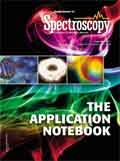Fast Quality Evaluation of Bulk Polymers and Products Using FT-NIR Spectroscopy
Application Notebook
FT-NIR spectroscopy for the quantitative determination of key physical parameters in bulk polymers and products, including density and melt index (MI). These measurements can often be made with little or no sample preparation.
FT-NIR spectroscopy for the quantitative determination of key physical parameters in bulk polymers and products, including density and melt index (MI). These measurements can often be made with little or no sample preparation.
Fourier transform (mid) infrared spectroscopy is an established technique for the fast and nondestructive analysis of plastic films, where it can typically provide critical compositional information, such as additive content and co-polymer concentration. However, in the manufacturing processes for bulk polymers of polyethylene (PE), physical property determination (for example, density and melt index) can be important quality control parameters. Due to the simplicity of sampling when using near infrared spectroscopy, FT-NIR has proved to be a very adaptable and useful method in these circumstances.
Experimental Conditions
For the PE samples, 65 different bulk polymer samples were provided, each sample in both pellet and powder form, so a total of 130 sample measurements were made. Both pellet and polymer samples were presented in glass scintillation vials approximately 2 cm in diameter and 6 cm in height, and were loaded into the FT-NIR spectrometer rotating powder sampler device without further sample preparation and measured in diffuse reflectance.

Figure 1: PE pellet samples - variation in FT-NIR spectra as MI and density change.
Spectral acquisitions were performed using an ABB MB3600 FT-NIR spectrometer, fitted with a TE-cooled InGaAs detector at 16 cm-1 resolution and with 128 co-added scans. The background reference measurement was made using a PTFE standard.
Calibration models were developed using PLS/IQ (Grams/AI version 7.0 software). Calibration model uncertainty is estimated by the standard error of cross validation (SECV). The static repeatability of the calibration is given by the standard deviation of ten consecutive measurements of the same sample without moving it from the sampling accessory.
Results and Discussion
The variations of properties in this study are presented in Figure 1.
Figure 2 displays the vibration regions of -CH3 or -CH2 function groups and spectra variation as to the change of properties in PE pellets samples.

Figure 2: Experimental design - variation of MI and density in PE sample set.
The calibration results are summarized in Table I for PE samples. It has been demonstrated that ABB MB3600 with a Powder SamplIR accessory could successfully determine MI and density in pellet and powder PE samples with: 1) SECV< lab reproducibility, 2) FT-NIR repeatability < lab repeatability.

Table I: Calibration results
Conclusion
FT-NIR technology could provide the solutions for the realization of at-line or on-line determination of these properties and provide quick feedback to the plant operator for the quality control.
ABB Analytical
585 Blvd. Charest E., Ste 300, Quebec, QC Canada G1K9H4
tel. 418 877 2944 Email: ftir@ca.abb.com; Website: www.abb.com/analytical

Thermo Fisher Scientists Highlight the Latest Advances in Process Monitoring with Raman Spectroscopy
April 1st 2025In this exclusive Spectroscopy interview, John Richmond and Tom Dearing of Thermo Fisher Scientific discuss the company’s Raman technology and the latest trends for process monitoring across various applications.
A Seamless Trace Elemental Analysis Prescription for Quality Pharmaceuticals
March 31st 2025Quality assurance and quality control (QA/QC) are essential in pharmaceutical manufacturing to ensure compliance with standards like United States Pharmacopoeia <232> and ICH Q3D, as well as FDA regulations. Reliable and user-friendly testing solutions help QA/QC labs deliver precise trace elemental analyses while meeting throughput demands and data security requirements.